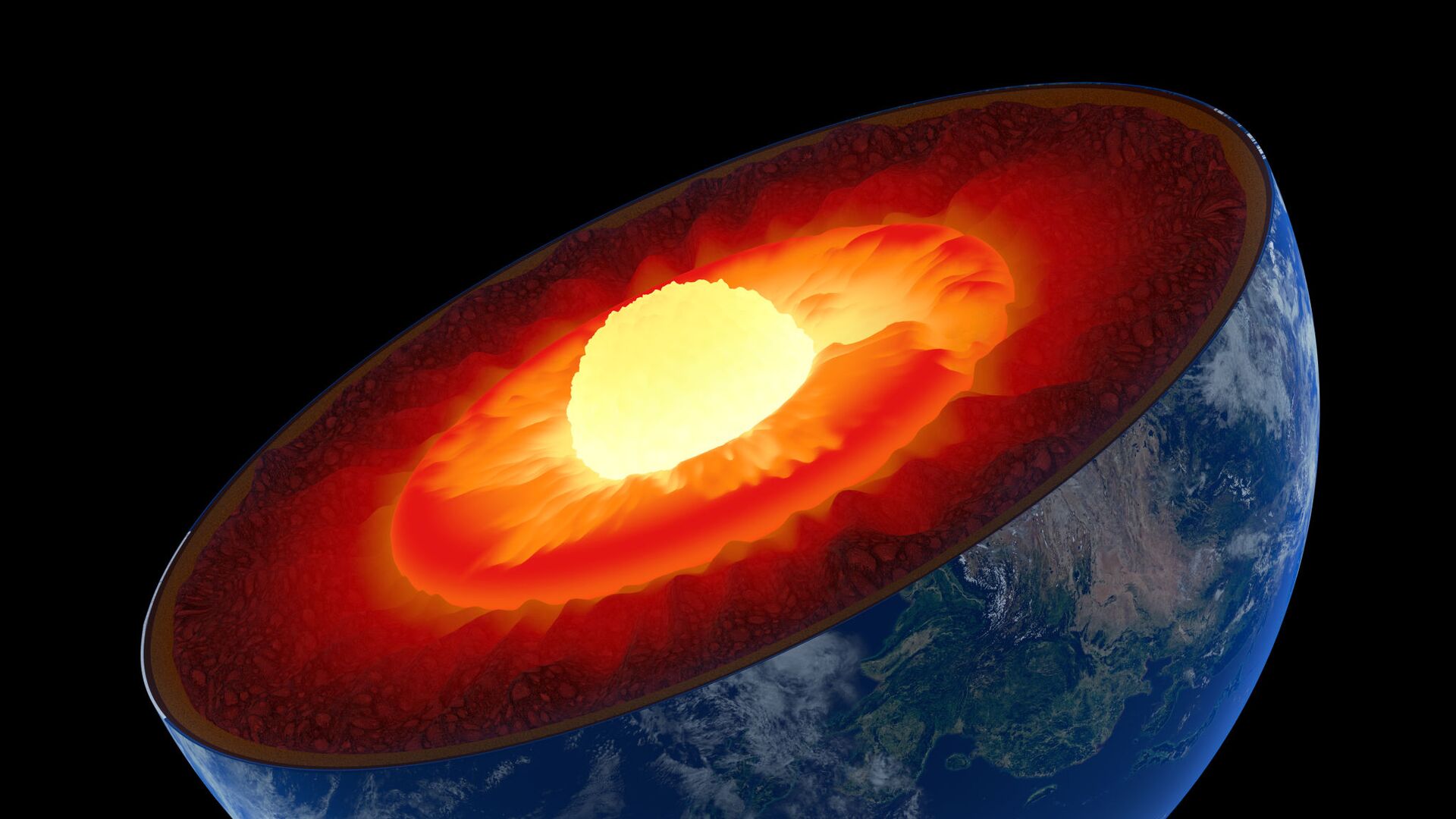https://en.sputniknews.africa/20230607/1059762698.html
Scientists Collect First-Ever Samples From Earth’s Mantle
Scientists Collect First-Ever Samples From Earth’s Mantle
Sputnik Africa
A group of scientists working from a drilling ship off the coast of the Azores have collected the first-ever core samples taken from Earth’s mantle, the molten... 07.06.2023, Sputnik Africa
2023-06-07T09:31+0200
2023-06-07T09:31+0200
2023-06-07T09:31+0200
science
https://cdn1.img.sputniknews.africa/img/07e7/06/07/1059762868_0:267:2049:1419_1920x0_80_0_0_9d623ab50ec5e288a2bc542110fb06e6.jpg
The scientific triumph was made thanks to a rare spot on the Atlantic seafloor where the mantle, which is normally buried beneath miles of the crust, pokes through and can be sampled. Past efforts have focused on drilling down through the crust, which can be 20 or more miles thick.However, at Atlantis Massif, an underwater mountain the size of Mount Rainier, the scientists only had to drill through about 4,100 feet of seafloor - less than a mile. They used a drilling ship called the JOIDES [Joint Oceanographic Institutions for Deep Earth Sampling] Resolution.According to the scientists, their success was far more than they’d anticipated, and what was expected to be a small sample turned into huge volumes of it.“We’ve achieved an ambition that’s been feeding the science community for many decades,” McCaig said.What they reached technically wasn’t the mantle itself, but the barrier region between the mantle and the crust known as the Moho, after Croatian seismologist Andrija Mohorovičić, who discovered it in 1909. Nonetheless, they were able to collect samples of mantle rock called peridotite in a relatively untarnished form. The mantle rock can sometimes be found after it’s been blasted out of volcanoes, but it arrives on the surface damaged by its violent trip.Three other efforts to reach the Earth’s mantle have failed. One, an American project in the early 1960s off the coast of Mexico called Project Mohole, reached a depth of 601 feet below the seafloor beneath 11,700 feet of water. A German effort in Bavaria from 1987 to 1995, the KTB superdeep borehole, reached a depth of 29,859 feet, halting when it hit rock 500 degrees Fahrenheit.However, the deepest point man has ever reached was the Soviet Union’s Kola Superdeep Borehole, drilled in the country’s far northwest between 1970 and 1995, which reached an astonishing depth of 40,230 feet, or 7.6 miles down. The Kola drillers could reach no further because the molten rock kept melting their drill bits.
Sputnik Africa
feedback@sputniknews.com
+74956456601
MIA „Rossiya Segodnya“
2023
Sputnik Africa
feedback@sputniknews.com
+74956456601
MIA „Rossiya Segodnya“
News
en_EN
Sputnik Africa
feedback@sputniknews.com
+74956456601
MIA „Rossiya Segodnya“
Sputnik Africa
feedback@sputniknews.com
+74956456601
MIA „Rossiya Segodnya“
science
Scientists Collect First-Ever Samples From Earth’s Mantle
A group of scientists working from a drilling ship off the coast of the Azores have collected the first-ever core samples taken from Earth’s mantle, the molten area that surrounds the planet’s core. They hope it will shed light on the chemical reactions that gave birth to life on Earth.
The scientific triumph was made thanks to a rare spot on the Atlantic seafloor where the mantle, which is normally buried beneath miles of the crust, pokes through and can be sampled. Past efforts have focused on drilling down through the crust, which can be 20 or more miles thick.
However, at Atlantis Massif, an underwater mountain the size of Mount Rainier, the scientists only had to drill through about 4,100 feet of seafloor - less than a mile. They used a drilling ship called the JOIDES [Joint Oceanographic Institutions for Deep Earth Sampling] Resolution.
According to the scientists, their success was far more than they’d anticipated, and what was expected to be a small sample turned into huge volumes of it.
“It just kept going deeper, deeper and deeper. Then everyone in the science party said, ‘Hey, this is what we wanted all along. Since 1960, we wanted to get a hole this deep in mantle rock,’” Andrew McCaig, the expedition’s co-chief scientist, told US media.
“We’ve achieved an ambition that’s been feeding the science community for many decades,” McCaig said.
What they reached technically wasn’t the mantle itself, but the barrier region between the mantle and the crust known as the Moho, after Croatian seismologist Andrija Mohorovičić, who discovered it in 1909.
Nonetheless, they were able to collect samples of mantle rock called peridotite in a relatively untarnished form. The mantle rock can sometimes be found after it’s been blasted out of volcanoes, but it arrives on the surface damaged by its violent trip.
Three other efforts to reach the Earth’s mantle have failed. One, an American project in the early 1960s off the coast of Mexico called Project Mohole, reached a depth of 601 feet below the seafloor beneath 11,700 feet of water. A German effort in Bavaria from 1987 to 1995, the KTB superdeep borehole, reached a depth of 29,859 feet, halting when it hit rock 500 degrees Fahrenheit.
However, the deepest point man has ever reached was the Soviet Union’s Kola Superdeep Borehole, drilled in the country’s far northwest between 1970 and 1995, which reached an astonishing depth of 40,230 feet, or 7.6 miles down. The Kola drillers could reach no further because the molten rock kept melting their drill bits.

